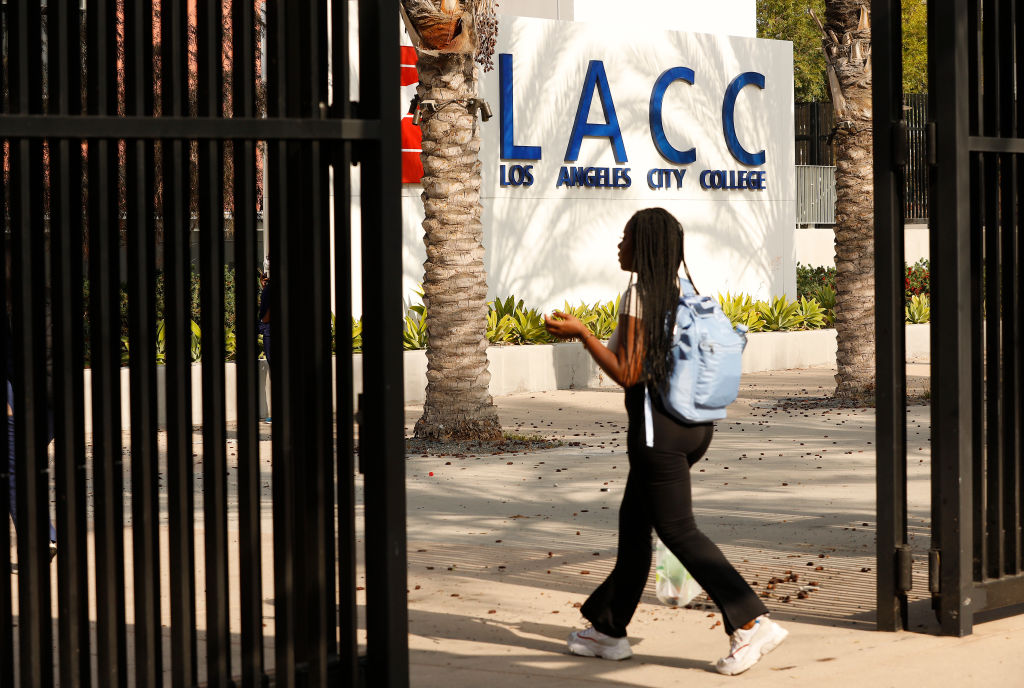
America’s College Promise -- the Democratic-backed plan to provide tuition for all community college students -- could allow more than nine million students to pursue an associate degree for free.
States, on the other hand, will have to open their wallets.
As it stands now, the promise program would be a five-year federal-state partnership. Over the course of the partnership, federal investment would steadily decline, starting at 100 percent in year one and dropping by 5 percent each consecutive year, leaving states to fund the rest.
Most Popular
Participating states would receive a per-student dollar amount based on the national median tuition, according to the proposed legislation. After accounting for inflation, the State Higher Education Executive Officers Association estimated that the per-student subsidy in the first year of the program would be $5,162, not weighted for enrollment.
The SHEEO analysis found that states will, on average, need to increase investment in higher education by 12 percent, or an average of $387 per full-time student, in order to opt in to the program.
Twenty-one states have average tuition figures above the national median, meaning that those states will need to pay up until that difference reaches zero dollars. As many as 12 states would need to increase funding by more than 15 percent before the 2023-24 academic year to be eligible, and seven states will need to up their funding by more than 25 percent. Alaska, New Hampshire, Pennsylvania and South Dakota are looking at increases over 40 percent. Vermont faces an especially sharp increase: to be eligible it would need to boost higher education funding by 142 percent.
States are likely split into three categories, said Will Doyle, a professor of public policy and higher education at Vanderbilt University. The first is made up of states with already low tuition, such as California, where the potential benefit of the college promise plan will likely outweigh any additional cost to participate. The second group includes states that will need to come up with some more funding but not a substantial amount, Doyle said. Georgia falls into this category. The third group includes states that have significantly lower investment in higher education and that would need to dramatically up their spending on community colleges in order to be eligible for the college promise program.
If passed, the program would begin during the 2023-24 academic year.
“I expect that most states in the first category will participate, while some but not all of the states in the middle category will participate, and that very few if any states in the last category will participate,” Doyle wrote in an email. “It’s hard to see how states might in the short term increase funding for community college students by 25 percent -- even though many of them should.”
Related Stories
The maintenance-of-effort clause included in the legislation would require states to keep up institutional revenues, meaning that state officials cannot cut from other parts of the higher education budget to make up the federal match.
“The way that the maintenance-of-effort provisions work in this, they really can’t cut funding to anything,” said Jenna Sablan, senior policy analyst at SHEEO. “The only thing that you can do is just increase the overall state support.”
States also cannot use any of the federal dollars to administer the money, meaning that any additional expenses incurred from managing the free tuition program will also come out of the state budget, said Sophia Laderman, senior policy analyst at SHEEO.
Another potential hiccup: there’s no federal definition of a community college.
“We think that we know what a community college is because we know the community college in our hometown or where we live,” Sablan said. “But because there’s no consistent federal definition of a community college, the bill has to, in the legislative text, define what that is in order to properly identify which institutions will get the funding.”
The legislation defines a community college as an institution where an associate degree is both the highest and the predominant degree awarded. This could include a branch campus of a four-year institution if it meets the other criteria, or a college within a four-year institution in a state that does not have another college that meets the criteria.
“There would be pretty large regions in the U.S. that don’t have any eligible institutions,” Laderman said.
Two-year colleges that grant only certificates would be excluded from the program. So would four-year institutions that offer associate degrees but more often grant bachelor’s degrees.
“From our read of the bill, if a student is enrolled at a community college that does offer associate’s degrees, but they’re enrolled in an eligible certificate program, their tuition will be free,” Laderman said. “So for those students, it just depends on which institution they’re going to.”
If the program is popular, it’s unlikely it will end at the five-year mark, Doyle said. He compared it to the Affordable Care Act.
“While I’m reluctant to give a firm prediction, I would say that benefits like this are very difficult for the feds to withdraw once in place, in no small part because these programs create their own constituency,” Doyle wrote.
Free community college plan requires states to up funding - Inside Higher Ed
Read More

No comments:
Post a Comment